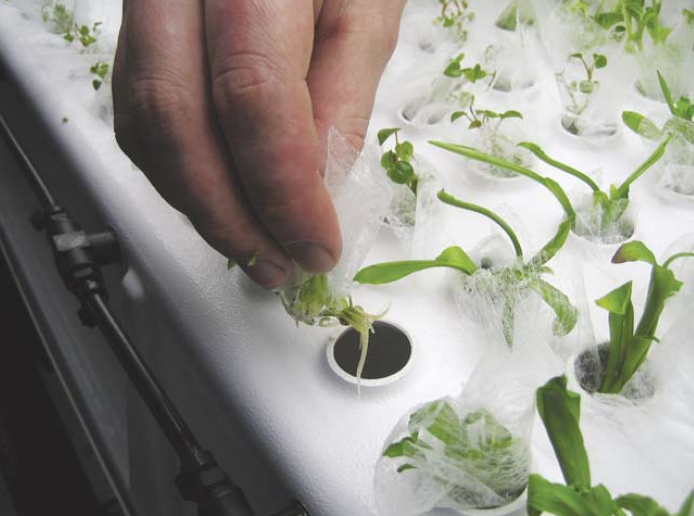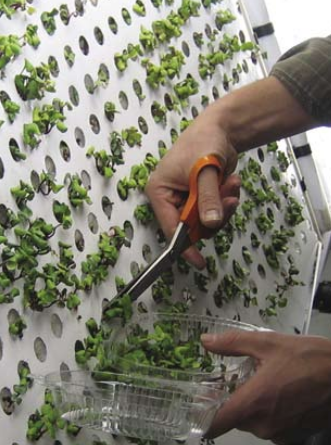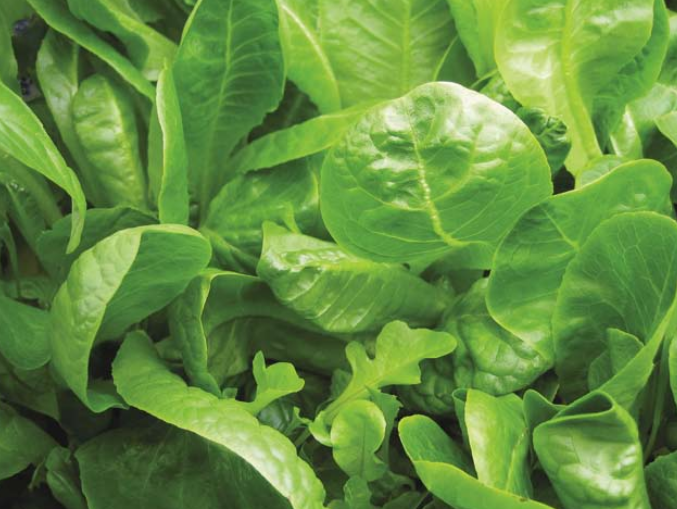Aeroponics is the most efficient growing method in terms of energy and resources used during the process compared to plant production. Aeroponic growth refers to growth achieved in an air culture. The basic principle of aeroponics is to grow plants in a closed or semi-closed environment by spraying the plant’s roots with a nutrient-rich solution. The main distinction from a variety of other hydroponic methodologies is the lack of a true growing medium. Many times closed-cell foam is compressed around the lower stem and inserted into an opening in the aeroponic chamber, which is just for convenience. Larger plants are typically attached to a trellis to support the weight of the plant and its fruit. An example of naturally occurring aeroponics can be seen in those orchids which grow high up in trees.

Aeroponics is extremely efficient in the use of both water/nutrients and energy, and for this reason, has been investigated by NASA as a means of producing plants in space, and potentially on the surface of the moon and/or mars. It generally is not well suited to commercial production of fruit-producing plants such as tomato, cucumber, and peppers; it is however well suited for herbs, lettuce, and strawberries. Basil might be the most popular example of widely available, aeroponically grown produce. Aeroponics is the preferred method to grow herbs when the roots are the harvested portion. It also is particularly useful in the propagation of plants from cuttings (cloning), some difficult to clone plants produce very good results in an aeroponic system. Because of the hardware investment and time required for maintenance, aeroponic growing has relatively few commercial applications. Aeroponics is brought to the average consumer in an automated prepackaged form marketed under the name AeroGarden (see page for detailed description).
It is the lack of a growing medium that distinguishes aeroponics from other forms of hydroponics. The roots are typically suspended in a closed or semi-closed environment, and are periodically bathed in a mist or fog based nutrient solution. The mist provides all of the water and nutrients for the plant to thrive. One of the attractive growing features of aeroponics is that the roots are constantly suspended in the air, and therefore are continuously exposed to ample quantities of oxygen. The roots should be exposed to oxygen something like 99% of the time.

The first factor influencing the effectiveness of an aeroponic system is the droplet size. Small droplets tend to stick to the roots better, allowing the plant to absorb the nutrients it needs; large droplets have a tendency to coalesce and fall to the reservoir below, and restrict oxygen to the root system. A very fine mist will produce excessive root hair without developing a lateral root system required for sustained growth. The droplets of nutrient solution are can be made using sprayers, misters, foggers, or ultrasonic nebulizers. The droplets are typically formed by forcing the stream of liquid through a small nozzle. The smaller the nozzle opening, the smaller the droplets. Greater pressure is required for smaller nozzles though, and particles dissolved in the solution could clog very small nozzles, or leave deposits on the ultrasonic foggers. NASA funded research has determined that high pressure mist of 5-50 micrometer droplets are necessary for long term aeroponic growth.
The second significant factor influencing the effectiveness of an aeroponic system is the frequency of the misting. The combination of droplet size and misting frequency are correlated. In most applications, a compromise is made to accommodate a larger droplet size in order to take advantage of using a lower pressure. Plants with a large leaf surface area could wilt even under a continuous fine mist sprayed on their roots. For this reason, a shallow pool of nutrient solution is typically allowed to collect at the bottom of the chamber where the tips of the roots can likely uptake sufficient water to keep them from wilting.
